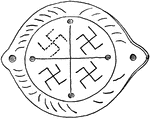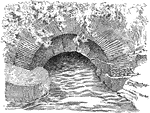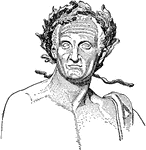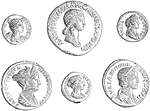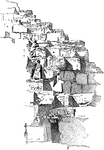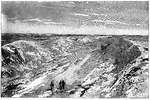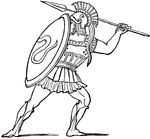
Aegean Snake Goddess
The sculpture of an ancient Snake Goddess. The artifact demonstrates typical Minoan female attire.

The Discus Thrower
Also known as Discobolus. The Discus Thrower is a famous, ancient bronze statue that demonstrates a…

Apoxyomenos
An ancient sculpture representing an athlete using a strigil to scrape sweat and dust off his body.
Greek Soldiers in Arms
"From a Greek vase of about the time of the battle of Marathon."—Webster, 1913

The Mound at Marathon
"Near the southern extremity of the plain of Marathon rises a conical mound, 30 feet high. it covers…

An Athenian Trireme
An ancient ship used by Greeks and Romans. The ship has three rows of oars on each side, with a man…
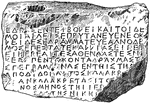
An Athenian Inscription
"A decree of the Council and Assembly dating from about 450 B.C."—Webster, 1913
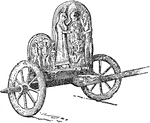
A Graeco-Ertuscan Chariot
"The chariot was discovered in 1903 in an Ertuscan cemetery near Rome. It dates from perhaps 600 B.C.…
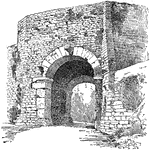
An Ertuscan Arch
"The Italian city of Volterra still preserves in the Porta dell' Arco an interesting relic of Ertuscan…

A Vestal Virgin
"Portrait from a statue discovered in the ruins of the Temple of Vesta in the Roman Forum."—Webster,…

Suovetaurilia
"The relief pictures an ancient Italian sacrifice of a bull, a ram, and a boar, offered to Mars to secure…

Column of Duilis
"The column was adorned with the brazen beaks of the captured Carthaginian vessels. Part of the inscription…

A Roman Legionary
"From a monument of the imperial age. The soldier wears a metal helmet, a leather doublet with shoulder-pieces,…

A Roman Standard Bearer
"From a gravestone of the first century A.D. The standard consists of a spear crowned with a wreath,…
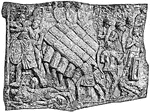
A Testudo
"A relief from the Column of Trajan, Rome. The name testudo, a tortoise (shell), was applied to the…

A Slave's Collar
"A runaway slave, if recaptured, was sometimes compelled to wear a metal collar riveted about his neck."—Webster,…

Pompey
Also known as Gnaeus Pompeius Magnus. He was a military and political leader of the Roman Republic.

Column of Trajan
A triumphal column in Rome, commemorating Roman emperor Trajan's victory in the Dacian Wars.
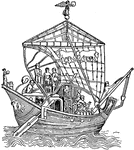
A Roman Freight Ship
"This ship lies besides the wharf at Ostia. In the afterpart of the vessel is a cabin with two windows.…

A Roman Aqueduct
"The Pont du Gard near Nimes (ancient Nemausus) in southern France. Built by the emperor Antoninus Pius.…

A Roman Temple
"The best preserved of Roman temples. Located at Nimes in southern France, where it is known as La Maison…
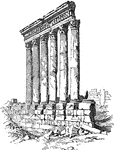
Temple of the Sun
"The ruins at Balbec in Syria lie amidst desolate mountains, forty miles from the sea. They consist…

The Wall of Rome
"Constructed by Aurelian and rebuilt by Honorius. The material is concrete faced with brick; thickness,…

Constantine the Great
Emperor of Rome from 306 to 337. He is best known for being the first Christian Roman emperor.

Tomb of Theodoric at Ravenna
"The two-storied marble structure is capped by an enormous monolith weighing over 300 tons."—Webster,…

Charlemagne
The King of the Franks from 768 and the Emperor of the Romans from 800 until his death in 814.
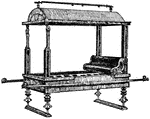
A Roman Litter
"The litter consists of an ordinary couch with four posts and a pair of posts. Curtains fastened to…

An Athenian Gravestone
"A relief on the tomb of a certain Hegeso. It represents a woman, seated, taking a jewel from a casket…

The Sheikh-El-Beled
"Supposed portrait of one of the overseers of the work on the Great Pyramid. This is one of the masterpieces…

The Judgment of the Dead
"Showing the weighing of the heart of the deceased in the scales of truth."—Myers, 1904

An Assyrian Winged Bull
Also known as a Lamassu. An ancient tutelary deity, often considered to be female.
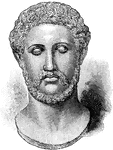
Alcibiades
A prominent Athenian statesman and member of the aristocratic family of the Alcmaeonidae.

The Dying Gaul
A Roman copy of an ancient Greek sculpture. The copy is made of marble, while the lost original sculpture…

Lictors with Fasces
"The symbolic fasces borne by these officers were probably of Ertuscan origin. The Tarquins are said…
